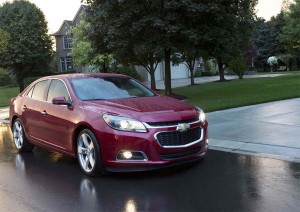
GM CEO Mary Barra during testimony before Congress in March. She has taken a number of steps to diffuse the recall crisis.
Expect GM to take some significant hits to its bottom line this year as it recalls more vehicles than at any time in its history – but the maker could begin the process of moving past its safety-related problems with today’s announcement that it has accepted a consent decree with federal regulators over its mishandling of defective ignition switches linked to at least 13 deaths.
While GM is expected to be hammered by fines, repair costs and likely legal fees stemming from a growing list of lawsuits, the real challenge will be to recover its sorely tarnished reputation – which had just begun to recover after its embarrassing, 2009 bankruptcy.
Company officials have confirmed they have been closing studying the way arch-rival Toyota has responded to – and largely recovered from – its own crisis following the mishandling of a series of recalls related to so-called unintended acceleration in 2009 and 2010. Despite having to pay a $1.2 billion fine earlier this year as part of a settlement with the U.S. Justice Department, its sales have been soaring and recent studies say consumers have largely forgotten about its much-publicized safety issues.
But whether GM can recover as quickly remains to be seen, industry analysts warn. And even Bob Ferguson, head of the Cadillac brand and a lead advisor to CEO Mary Barra, acknowledges it could take several years for the Detroit maker to put the current crisis in its rearview mirror.

Five recalls on Thursday alone targetted over 2.7 million vehicles, including the 2014 Chevy Malibu.
Ironically, it began as a very good year for General Motors. The maker scored well in a series of closely watched quality and reliability studies, topping even Toyota on the most recent J.D. Power Initial Quality Survey. Its newly designed Chevrolet Corvette and Chevrolet Silverado were named North American Car and Truck of the Year in January by a panel of 50 automotive journalists. And even the oft-skeptical Consumer Reports magazine raved about the latest update of the big Chevy Impala.
Then the bottom dropped out, GM in March announcing that a number of its products had been equipped with faulty ignition switches that could unexpectedly shut off, potentially leading to a crash. And with the vehicle’s airbags disabled, motorists were at greater risk of death or injury. The maker subsequently expanded the list of models covered by the recall to nearly 3 million worldwide, confirming 13 deaths linked to the defect.
(For more on Thursday recall blitz, Click Here.)
But it also has acknowledged that it first learned of the problem over a decade ago, while internal documents showed managers previously rejecting a proposed recall due to the potential cost.
It’s the ignition switch problem that is covered by the new consent decree with the National Highway Traffic Safety Administration, but GM’s safety-related problems are far broader. Since March, it has had to recall about 11.5 million vehicles sold in the U.S., by its own count. That included Thursday announcement of five new recalls covering 2.7 million vehicles – with an embarrassing, smaller recall added Friday morning.
(Ignition switch victim’s family re-files suit against GM. Click Here for the latest news.)
Automakers can recover from even such serious black eyes, said Dave Sullivan, an analyst with AutoPacific, Inc. But industry watchers say the process could be a longer one for GM than Toyota because its quality reputation was, for years, so poor.
And it will require the maker to take a large bite of humble pie, accepting costly penalties, like the one brought down by NHTSA, as well as another expected to come, eventually, from the Justice Department. The Securities and Exchange Commission has its own investigation going – as do both houses of Congress.
And then there are the lawsuits. Plaintiffs attorneys have already filed a number of claims against the maker over the ignition switch problem and other issues. GM is searching for ways to handle the flood without draining its treasury – or further looking like it puts profits ahead of people.
And that, analysts contend, will be the biggest challenge, to show that not only are its newest models world-class when it comes to both quality and safety, but also to demonstrate that what CEO Barra likes to call the “new GM” really is focused first and foremost on its customers.
“We have learned a great deal from this recall,” said Barra, who took the reins at GM just months before the recall crisis began. In a prepared statement she added that, “We will now focus on the goal of becoming an industry leader in safety We will emerge from this situation a stronger company.”
(NHTSA forcing GM to change safety culture. Click Here for details.)
